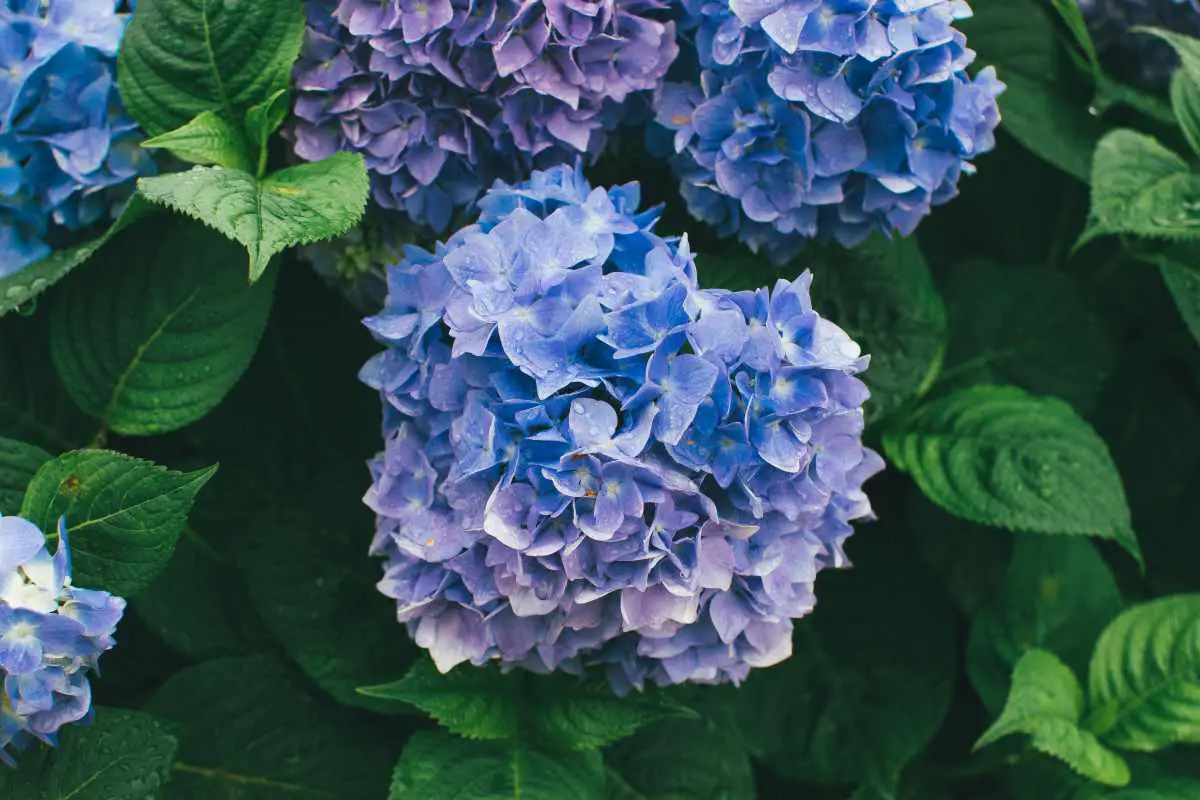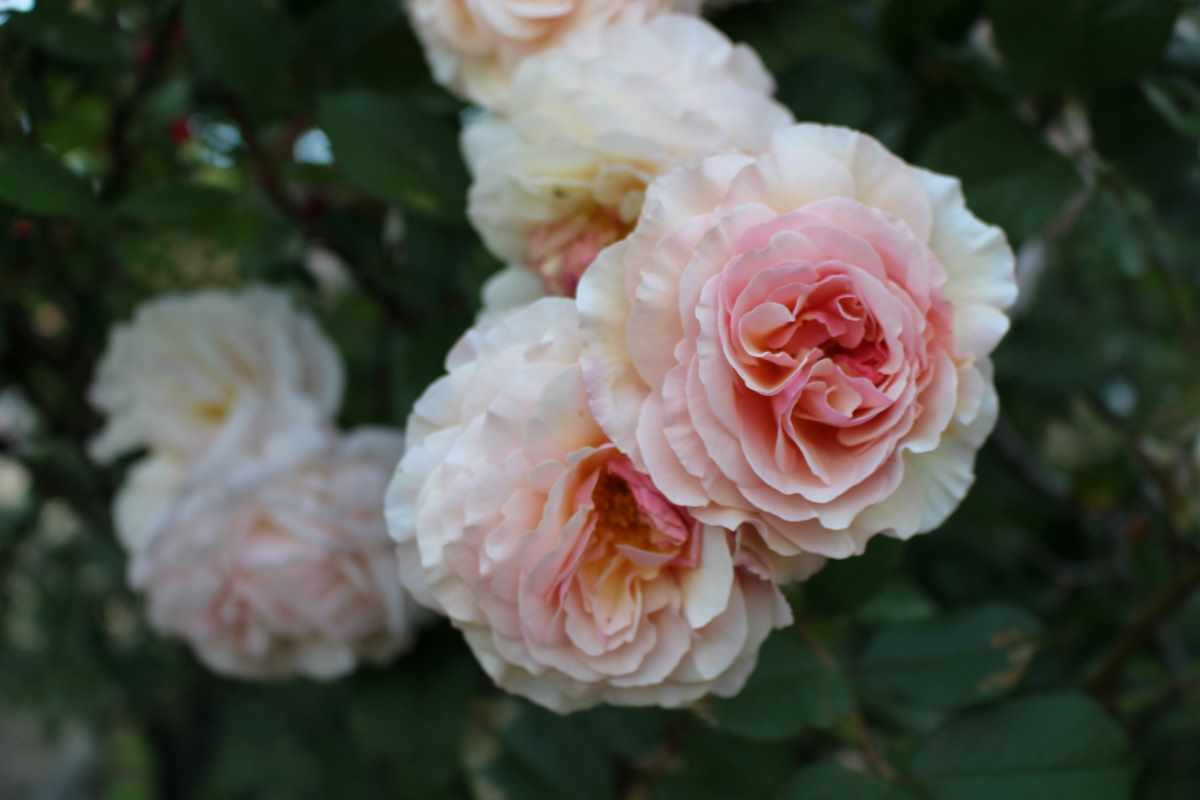This article will teach you how to prune a lilac bush, and give you all the guidance and all the steps that you need to do so. Although lilacs can go for many years without pruning, pruning them is essential to maintain health, shape, and encourage blooming.
When Is The Best Time To Prune Lilacs?
Although it might be tempting to prune your lilac bushes in the summer when they look all scraggly, or in the winter when the branches are bare, don’t.
One very important piece of information that you need to know is that lilacs bloom on old wood. Old wood is wood that has grown and harden for about a year or two.
This means that the best time to prune lilacs is right after they have finished flowering, typically in late spring, or early summer.
Pruning any time other than the aforementioned will remove the buds and any chance getting any blooms this season or the next.
Lilac Varieties
Lilacs come in various varieties, each with its unique characteristics in terms of flower color, fragrance, and growth habit. Here are some popular lilac varieties:
1. Common Lilac (Syringa Vulgaris)
This is the most widely recognized lilac variety, known for its fragrant, lavender-colored flowers. It’s a large shrub or small tree with heart-shaped leaves.
2. French Lilac (Syringa Vulgaris ‘Charles Joly’)
This variety is prized for its deep purple, double flowers and strong fragrance.
3. Persian Lilac (syringa Persica)
A smaller lilac variety with lighter purple flowers and a more delicate fragrance. It’s often grown for its more refined appearance and smaller size.
4. Japanese Lilac (syringa Reticulata)
This variety features creamy-white flowers that bloom later than other lilacs, typically in late spring to early summer. It’s a tree-like lilac and can grow quite tall.
5. Hyacinth Lilac (syringa X Hyacinthiflora)
These lilacs are hybrids between S. vulgaris and S. oblata. They bloom earlier than common lilacs and have a wider range of colors, including white, pink, and purple.
6. Miss Kim Lilac (syringa Patula ‘ Miss Kim’)
A smaller lilac variety with pale lavender flowers and a spicy fragrance. It’s a compact shrub, making it suitable for smaller gardens or as a border plant.
7. Dwarf Korean Lilac (syringa Meyeri)
As the name suggests, this lilac variety is compact and has smaller leaves and flowers. It blooms in late spring with pale purple flowers.
8. Preston Lilac (syringa X Prestoniae)
These are hybrids between S. reflexa and other lilac species. They come in various colors, including pink, purple, and white, and are known for their large flower clusters.
Littleleaf Lilac (syringa Microphylla)
This lilac variety has smaller leaves and flowers compared to common lilacs. It blooms in late spring with pink or purple flowers and has a more compact growth habit.
These are just a few examples of the many lilac varieties available, each offering something unique in terms of color, fragrance, and size.
Regardless of the variety of lilacs you have, they all should be pruned in the same manner.
Tools You’ll Need For Pruning Lilacs
There are a few tools you’ll need for pruning lilacs. Sharp clean pruning shears, loppers, a hand saw, and a spritzer filled with rubbing alcohol or a diluted bleach solution.
Pruning shears are great for using on branches that are 1 inch in diameter or less. Use loppers on branches that are 2 inches in diameter or less, and a hand saw on anything that is larger than 2 inches.
Disinfect the tools with rubbing alcohol or a diluted bleach solution before and after pruning to prevent the spread of diseases.
If you notice that one of the branches that has been pruned is diseased, disinfect your tools before moving on to another branch.
The Basics Of Pruning
- Take a close look at your lilac before making any cuts. Start by removing any dead, damaged, or diseased branches. Cut these branches back to the base or to where they meet a healthy branch.
- Thin out crowded branches or any thin, filler branches to improve air circulation and sunlight penetration. Cut back about one third of the oldest stems at ground level. This encourages new growth and rejuvenates the plant.
- Lilacs can develop a dense, twiggy growth if not pruned regularly. To maintain a pleasing shape, selectively prune back branches that stick out or cross over others. Aim for an open, airy center.
- If your lilac bush is becoming too tall or leggy, you can selectively prune back the tallest stems to maintain a more manageable size. Cut them back to just above a healthy bud or branch junction.
- Avoid Over-pruning. Lilacs bloom on old wood, meaning they set their flower buds the year before they bloom. Avoid excessive pruning, especially in late summer or fall, as this can remove next year’s flower buds.
- Remove suckers. Lilacs can produce suckers, which are shoots that emerge from the base of the plant. These suckers can sap energy from the main plant and should be removed as soon as they appear.
- Once you’ve finished pruning, remove any debris from around the base of the lilac bush. This helps prevent the spread of diseases and pests.
Remember that while lilacs are fairly forgiving when it comes to pruning, it’s always best to prune conservatively, especially if you’re unsure. It’s easier to take off more later than to undo an overzealous pruning job.
Watch: 5 Things I Wish I Knew About Lilacs Before Having Them
How To Prune A Lilac Bush – Rejuvenation Prune
What Is A Rejuvenation Prune?
Rejuvenation pruning is a technique used to renew or revitalize overgrown or neglected shrubs by selectively removing old, woody growth. It involves cutting back the plant severely to stimulate new growth from the base or lower on the plant. This process helps to improve the overall health, appearance, and longevity of the shrub.
The main objectives of rejuvenation pruning are:
- Renewal: By removing old, unproductive branches, rejuvenation pruning encourages the growth of new, vigorous shoots from the base of the plant.
- Improved Appearance: Overgrown shrubs can become leggy, misshapen, or dense, diminishing their aesthetic appeal. Rejuvenation pruning can restore a more balanced and attractive form to the shrub.
- Enhanced Flowering: Many shrubs, including lilacs, produce flowers on new growth. Rejuvenation pruning stimulates the growth of fresh, flowering wood, which can lead to a more prolific bloom.
- Long-Term Health: Eliminating diseased, damaged, or weak branches through rejuvenation pruning can enhance the overall health and vigor of the shrub, reducing the risk of pest infestations and disease.
While it may seem drastic to cut back the plant severely, rejuvenation pruning is often the most effective way to restore vitality to an overgrown or declining shrub.
It’s important to use sharp, clean pruning tools and to make cuts just above healthy buds or lateral branches to promote proper healing and regrowth.
When And How To Perform A Rejuvenation Prune On A Lilac Bush?
If your lilac has a lot of dead, damaged, or diseased branches, it may be time to give it a rejuvenation prune.
To do so, cut back any and all of the dead, damaged, or diseased branches to the base.
Asses your shrub, and decide on the shape you want it to take, and the size that you want to reduce it to. If you have enough healthy branches to make a good structure, it may not be necessary to cut everything back to the base.
You can even cut the shrub back by half. To do so, cut each branch to a lateral branch. If you do not cut to a lateral branch, much overgrowth will be produced from the base of the plant during the next season. This overgrowth must be thinned to prevent disease.
If you choose to cut back your lilac severely, even if you cut it back by half, you would be forfeiting next years blooms. Forfeiting next years blooms may be necessary in the case of an overly diseased shrub in order to rejuvenate the shrub and stimulate new growth.
I have performed a rejuvenation prune on one of my lilacs one year. It took it about 2 years to start blooming. However, this lilac now looks the healthiest of all my lilacs, and it blooms the most.
Pin This Post!

More Gardening and Recipe Related Topics
Gardening
Recipes
Mediterranean Okra Stew With Beef
Shop This Post
Tell Us What You Think!
Pruning lilacs is essential for maintaining their health, shape, and flowering potential. The best time to prune is right after they bloom in late spring or early summer. Remove dead or diseased wood, as well as any crossed or rubbing branches.
To encourage vigorous growth and abundant flowering, selectively prune older stems to ground level every few years, a process known as rejuvenation pruning. This stimulates the growth of fresh shoots from the base of the plant.
Regular pruning helps maintain lilacs’ desired size, shape, and overall appearance while promoting optimal flowering and long-term health.
Is this your first time pruning lilacs? Let us know if you have any comments or questions down in the comment section below.





Be the first to reply